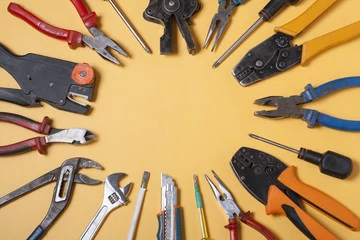Motorcycle Lithium Starting Battery Maintenance Frequency
main content
Understanding motorcycle lithium starting battery maintenance frequency is critical for maximizing performance, safety, and lifespan. Unlike traditional lead-acid batteries, lithium variants demand specific care routines tailored to their chemistry. This guide outlines actionable maintenance schedules, best practices, and common pitfalls to help riders optimize their battery’s health.
Core Maintenance Frequency Guidelines
1.Monthly Voltage Checks
Regularly monitor battery voltage using a multimeter. A healthy lithium starting battery should maintain 12.8–13.2V at rest. Voltage drops below 12.4V indicate immediate recharging needs or potential cell imbalance.
2.Partial Charging Cycles
Prioritize charging within the 20%–80% range for daily use. Full charges (100%) should occur only monthly to balance cells. Overcharging accelerates degradation, while frequent deep discharges stress lithium chemistry.
3.Seasonal Storage Protocols
For inactive periods exceeding one month, store batteries at 50%–60% charge in environments between 10°C–25°C (50°F–77°F). Recharge every 3 months to prevent capacity loss from self-discharge.
4.Terminal and Connection Inspections
Clean terminals quarterly using a baking soda solution to prevent corrosion. Tighten connections to avoid voltage fluctuations, which strain battery cells.
Best Practices for Extended Battery Life
Use Lithium-Specific Chargers: Always pair batteries with chargers designed for lithium chemistry, featuring automatic voltage cutoff and temperature sensors.
Avoid Extreme Temperatures: Charging in temperatures below 0°C (32°F) or above 40°C (104°F) risks irreversible damage. Let batteries cool post-ride before charging.
Monitor Charging Speed: Limit fast charging (1C–2C rates) to emergencies. Slow charging (0.5C or lower) minimizes heat buildup and extends cycle life.
Common Maintenance Mistakes to Avoid
Neglecting Voltage Trends: Ignoring gradual voltage declines accelerates failure. Track readings monthly to detect early wear.
Over-Reliance on Fast Charging: Frequent high-speed charging degrades cells 25% faster. Reserve it for urgent needs.
Improper Storage: Storing fully charged or depleted batteries causes sulfation or cell swelling. Always stabilize charge levels before storage.
Long-Term Care Strategies
Adopt a proactive maintenance schedule to prevent 70% of premature failures. Combine monthly visual inspections with annual professional diagnostics. Document charge cycles and voltage patterns to personalize care routines. For lithium batteries, prioritize partial charging, temperature control, and certified equipment to sustain 5–8 years of reliable service.
Conclusion
Consistent adherence to motorcycle lithium starting battery maintenance frequency guidelines ensures peak performance and safety. Invest in quality chargers, monitor environmental conditions, and avoid shortcuts. By balancing vigilance with smart charging habits, riders can enjoy worry-free starts and extended battery life.

START-STOP LITHIUM battery
Enov start-stop battery is designed to provide excellent performance for high-demand start-stop vaehicles. It adopts the third-generation intelligent lithium platform architecture to achieve technological breakthroughs in core indicators such as cycle life, environmental adaptability and energy density. Compared with the traditional lead-acid battery system, the energy efficiency is increased by 210%, the cycle life is extended by 8-10 times, and the monthly self-discharge rate is controlled within 3%. Enov's unique low-temperature battery technology makes a breakthrough in achieving stable output in the whole climate domain from -30℃ to 65℃, maintaining more than 90% of the effective capacity release under extremely cold conditions (-30℃), and maintaining 90% of the capacity in high temperature environments (65℃).
The start-stop battery series products cover the mainstream voltage platform of 12V/24V/48V, and support flexible configuration of LFP (lithium iron phosphate) and NCM (lithium nickel cobalt manganese oxide) dual-material system. All models adopt modular design to support customization of different model specifications. Enuo engineering and technical team to provide full cycle technical service support, if you need, please contact us.
Other products
UAV BATTERY
LITHIUM ENERGY STORAGE BATTERY
QUICK INQUIRY
FAQ
Access to high frequency technical questions with one click, get accurate answers on product application, after-sales policy and customization process.
Service and Support
Get the latest product specifications, explore professional OEM/ODM customization services, click to open exclusive technical support and production solutions.
Become a Partner
We sincerely invite resources to interconnect, work together for win-win development, and immediately open a new chapter of strategic cooperation!



